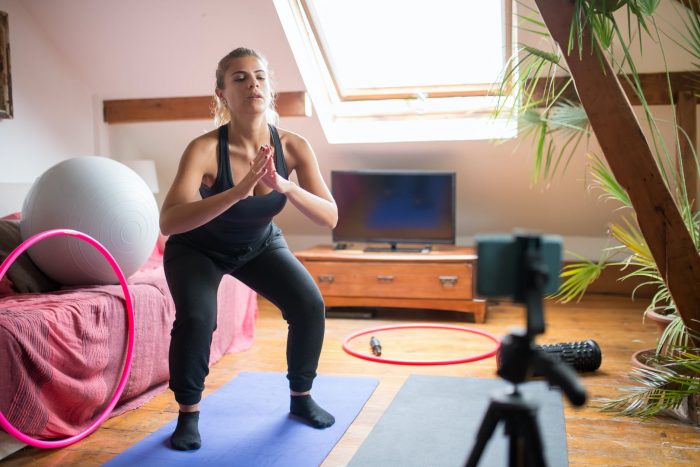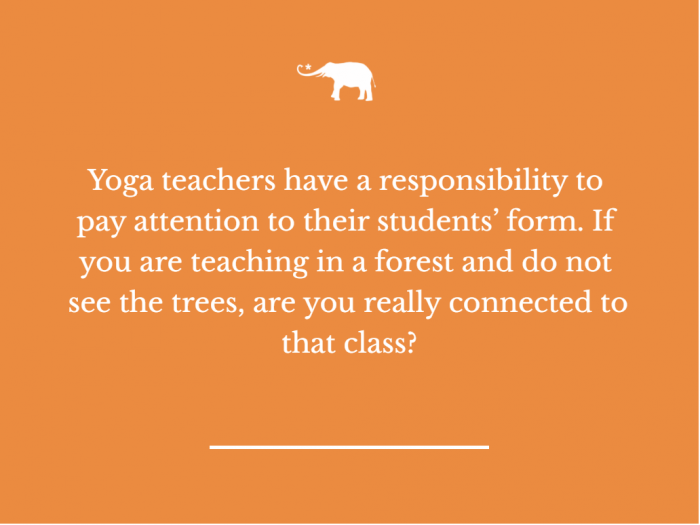Okay, I know that is a bold statement.
And let me quickly qualify it: Zoom has been a great tool in many ways. And it hasn’t ruined all yoga classes. But boy, is there ever a trend. And the trend is this:
Teachers no longer pay attention to their students. This is probably because when you are teaching a video class, 99 percent of teachers I know simply focus the camera on their own mats and execute all of the poses while talking through them, which is no easy feat.
(I do know one teacher who just stays in front of the camera and announces the poses, while motivating with badassery and frequent f-bombs, and occasionally showing his sleeping dog on the couch behind him. But he is an outlier to my amateur research, and—as mentioned before—a bona fide badass.)
So now we are back in the yoga studio—at least some of the time! And teachers still teach from their mats. Or rather, they do the asanas and talk through them while practicing. They don’t actually see or pay attention to their students. I see this as a problem.
Last week, I took a 90-minute hot class in which the instructor kept his back to the room for the whole 90 minutes. And the studio had no mirrors. He could not see his students.
It was disconcerting.
Also weird.
Of course, because of Covid (19, 24, or whatever version we are in now; I’m frankly losing track), teachers are not supposed to touch their students to make adjustments or assists. And in many studios, all are practicing masked and maintaining distance. I still believe that a teacher could give a verbal assist when needed. As I practice, I frequently notice a student in class who could use a cue to widen their stance, bend their knee, or lower their shoulders; they are practicing blind. I could also benefit from those reminders in my practice, but none are forthcoming.
Yoga teachers have a responsibility to pay attention to their students’ form. In the worst-case scenario, someone could be practicing in a way that might harm their body. And in most cases, students would benefit from a cue that gives them correct form and better access to the posture.
The advent of the video yoga class has been beneficial to me in that I have been able to practice with a teacher I normally train with in person. In many ways, the choice to still connect with that yoga community saved me from despair, and I am deeply grateful.
During the early days of the pandemic, I taught a few of my own classes via Zoom, and it was difficult for me: I had to face my camera-shyness, overcome my negative body image issues, and deal with trying to speak loudly enough to be heard while doing postures and trying not to get out of breath.
It was humbling.
I vastly prefer the in-person class, both as a teacher and a practitioner. Having said that, I appreciate the new era of options that has made available classes, meetings, doctor’s visits, counseling appointments, book clubs, and all of the things we used to have to go to.
But in-person yoga classes cannot be taught in the same way that Zoom yoga is.
And if you are teaching this way, are you really teaching, or just practicing your own yoga with an audience?













Read 15 comments and reply